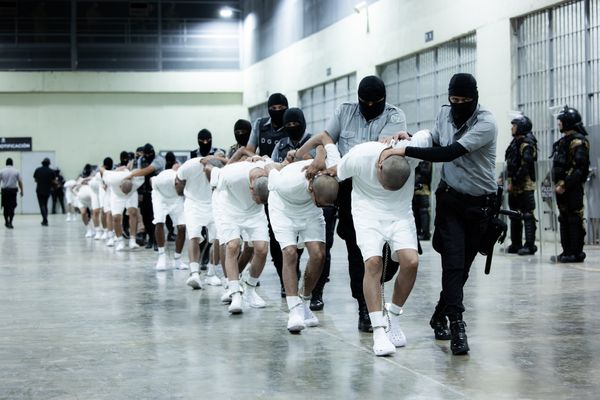Surfing is among the sports making an Olympic debut in Tokyo, with the IOC hoping to attract a new and younger audience with its inclusion.
Its addition to the Olympic program has been questioned but a successful debut in Japan may sway even the harshest critics who have felt surfing does not belong at the Games.
Forty surfers in total will compete, with an even split of 20 each in the respective women's and men's programs.
How will surfing be scored in Tokyo?
The surfers face the scrutiny of five judges, who score each wave on a scale of one to 10.
The highest and lowest scores given by the judges for each wave are eliminated, with the surfer to be awarded the average of the remaining three scores.
The overall total score given to a surfer is a combination of their two highest-scoring waves, meaning 20 is the maximum points available.
There is no limit on how many waves a surfer can catch.
What's the scoring criteria?
According to the IOC's website, the five judges will be looking for the following:
- Commitment and degree of difficulty
- Innovative and progressive manoeuvres
- Variety of manoeuvres
- Combination of major manoeuvres
- Speed, power and flow
When considering these elements, it is clear how crucial wave selection is in competitive surfing, which is why quality counts more than quantity.
Who are the Aussies competing?
Australia has an excellent chance of winning a medal in women's surfing, with Stephanie Gilmore and Sally Fitzgibbons flying the flag.
Gilmore is a seven-time world champion and currently sits fifth on the women's World Surf League (WSL) rankings.
Her compatriot Fitzgibbons is one of the in-form surfers competing in Tokyo, having won gold at last month's World Surfing Games in El Salvador.
Fitzgibbons is third on the WSL rankings.
Julian Wilson and Owen Wright, both experienced on the international stage, will represent Australia in the men's competition.
Who are the international stars?
Aside from the Australian contingent, the respective women's and men's competitions are stacked with some of the best surfers in the world.
Hawaii's four-time world champion Carissa Moore will represent the United States alongside the outstanding 19-year-old Caroline Marks.
France's Johanne Defay, second behind Moore on the WSL rankings, is competing, as is the fourth-ranked Tatiana Weston-Webb of Brazil.
Weston-Webb is joined in the Brazilian squad by two gold medal prospects in the men's program, Gabriel Medina and Italo Ferreira.
Medina is a two-time world champion (2014, 2018) and ranked number one on the WSL standings, one sport ahead of Ferreira, who won the 2019 world title.
Another former world champion, Hawaiian John John Florence (2016, 2017), will front up for the US, while the impressive Kanoa Igarashi is Japan's best surfing medal prospect.
The charismatic Igarashi, who was born in California, is ranked sixth in the WSL and won silver at last month's World Surfing Games.
Where and when will surfing take place?
The surfers will hit the waves at Tsurigasaki Surfing Beach, which is located in Ichinomiya in Chiba Prefecture to the east of Tokyo.
Weather permitting, the first and second-round heats will take place today, with round three to be held tomorrow. The quarter-finals and semi-finals are scheduled to be staged on Tuesday, before the medals are decided on Wednesday.
There are four reserve days included in case weather causes delays to the program.







